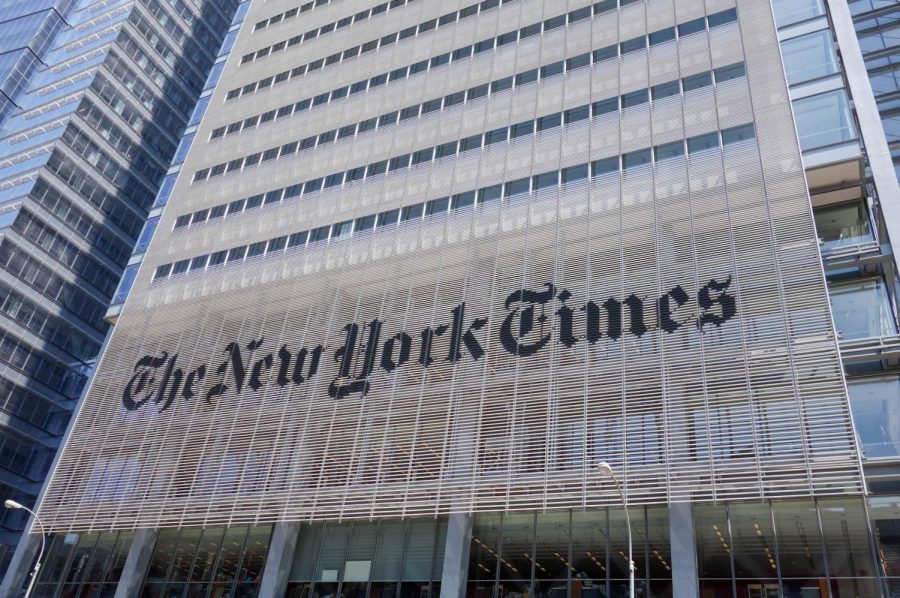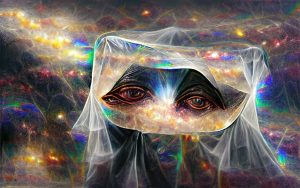South students earn honorable mentions from New York Times
Photo by Scott Beale from Flickr used with permission.
Four students at South Forsyth High School were recognized in the New York Times for their work. The New York Times building, which is located in Midtown Manhattan, New York City, was completed in 2007.
March 6, 2018
This past month, four students from South Forsyth High School were given recognition for their work. Seniors Zoe Maisel, Andrew Reilly, Santhosh Saravanan, and Emma Wigington all had their essays mentioned in The New York Times after entering their contest. The Learning Network, an organization that presents daily challenges for teenagers, gave students the following prompt: “connect something you’re studying in school with the world today.” In their AP Literature class, they had to pick a novel and had to relate it to one of The New York Times’ current articles. Students were introduced to this contest in December, and had to turn in their work on January 16th. Winners were announced on February 22nd.
Zoe Maisel decided to compare “The History Teacher” by Billy Collins and “‘To Kill a Mockingbird’ Removed From School in Mississippi” by Christina Caron. “I wrote the comparison about censorship in education and how that can be related because in the poem, the history teacher tones down how he’s teaching. He says about the atomic bomb ‘I think we just dropped a atom on them’, and it’s really satirical. That’s actually similar to stuff that’s happening in real life with the censorship of certain books that are being banned from schools,” says Maisel. “The poem stuck out to me when we were reading it in class, and so I remembered it. I was looking through the NYT trying to find articles, and then I saw the one about ‘To Kill A Mockingbird’ and I saw the connections between them, so I found them easy to relate to. It was something I cared about.”
Santhosh Saravanan connected “The Namesake” by Jhumpa Lahiri and “Finding Myself Through My College Major” by Joshua Kam. “I really like The Namesake because it kind of relates to my background. The main character is Indian, and I kind of related to that and how he grew up.” “Both the main characters in the article and the book, they struggled to find their self identity. Once they found it they were more confident people. In The Namesake the main character’s name is Gogol and when he started to learn about his tradition and culture, he started finding his identity. Joshua, the main character in the article, was studying history and classics and he found his identity through studying this material.”
Emma Wigington related “Southern Cop” by Sterling Brown and “When Will Black Lives Matter in St. Louis?” “I really think that the Black Lives Matter movement is important. People don’t realize that Black lives should matter. Southern Cop is a poem we read in AP Lit and it just really stuck with me. I still love it. It talks about this cop that shoots a black man and it says ‘let us pity him’, which is really satirical.
Andrew Reilly took a twist, and instead of connecting a certain written work to an article, he compared a historic event to an article. He related “Tulip Mania” in 17th century Holland to the Bitcoin. “Factually, the tulip bubble was a speculative bubble. People were buying tulip bulbs for ridiculous prices, more than any tulip bulb is worth. People kept buying more and more, and eventually were putting loans on their houses to buy more tulip bulbs. Obviously, the bulbs weren’t worth that much, so when that crashed, the value crashed and it hurt the entire Dutch economy for a few years. So bitcoin, people in the media have been saying that this is just like it where it’s now $10,000 per bitcoin or more. I was challenging that idea in my essay, saying that it’s not necessarily an accurate representation to compare the two because bitcoin has an underlying value in blotching technology.”





